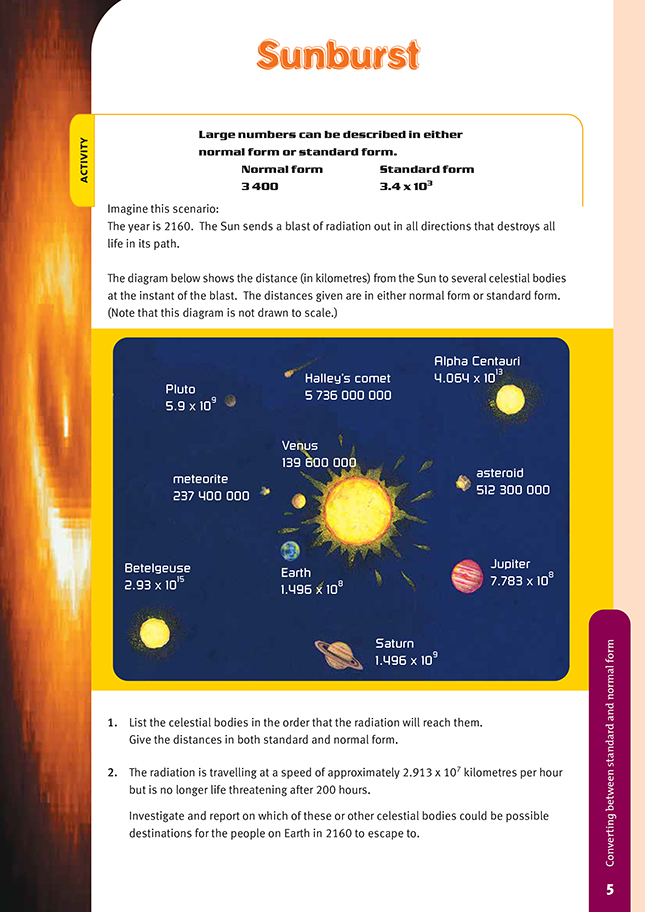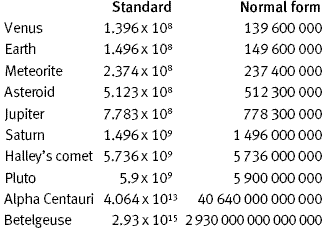This is a level 5 number activity from the Figure It Out series. It relates to Stage 8 of the Number Framework.
A PDF of the student activity is included.
Click on the image to enlarge it. Click again to close. Download PDF (174 KB)
convert between standard and normal form
FIO, Level 4+, Number, Book Six, Sunburst, page 5
In this activity, students convert numbers from normal form into standard form (and vice versa) and order very large numbers.
When numbers are converted to standard form (also known as scientific notation), they are always written as the product of a number between 1 and 10 and a power of 10. For example, 2 342.6 written in standard form is 2.3426 x 103. The 2 is a whole number between 1 and 10 and 103. denotes 1 000. As another example,
0.0042 expressed in standard form would be 4.2 x 10-3. The standard form of numbers becomes efficient when dealing with very large numbers (as with the distances in this activity) or with very small numbers (such as the wavelength of sodium light in a street lamp). The students will probably soon realise the value of
expressing very large numbers in standard notation as they work on question 1, especially when they come to write the distance for Betelgeuse, which turns out to be 2 930 000 000 000 000 kilometres from the Sun. Calculators often work in standard form, although the way this is expressed varies with different calculators.
In standard form, the students will need to consider both the first factor (that is, the number between 1 and 10) and the second factor (the particular power of 10) when determining just how big the number is. In the data for this activity, they will find that the distances for Earth and Venus both have a second factor of 108 and a first factor of 1 point something. They will therefore have to look closely at the decimals that follow the ones digit of the first factor (0.496 and 0.396 respectively) if they are to place these two planets accurately in order of distance. At a distance of 1.396 x 108 or 139 600 000 kilometres, Venus is the closest celestial body to the Sun of those listed in the activity. The requirement in question 1 that the distances be listed in
both standard and normal form should help the students begin to understand the relationship between normal and standard form.
When working on question 2, some students may need help (perhaps from other students) to see that converting the velocity of the radiation to distance can be done most effectively by writing the 200 hours as 2 x 102. The expression then becomes 2.913 x 107 x 2 x 102 which can be written as 2.913 x 2 x 109 (the 109 being obtained by adding the exponents 7 and 2, as in the activity on the previous page of the student book). In the form 5.826 x 109 the distance can then be compared with the distance (in standard form) of the various celestial bodies named in the activity.
Answers to Activity
1.
2. The radiation would travel 5.826 x 109 km before it was no longer life-threatening. So Pluto, Alpha Centauri, Betelgeuse, and any other star that is
further than 5.826 x 109 kilometres away from the Sun could be considered.

